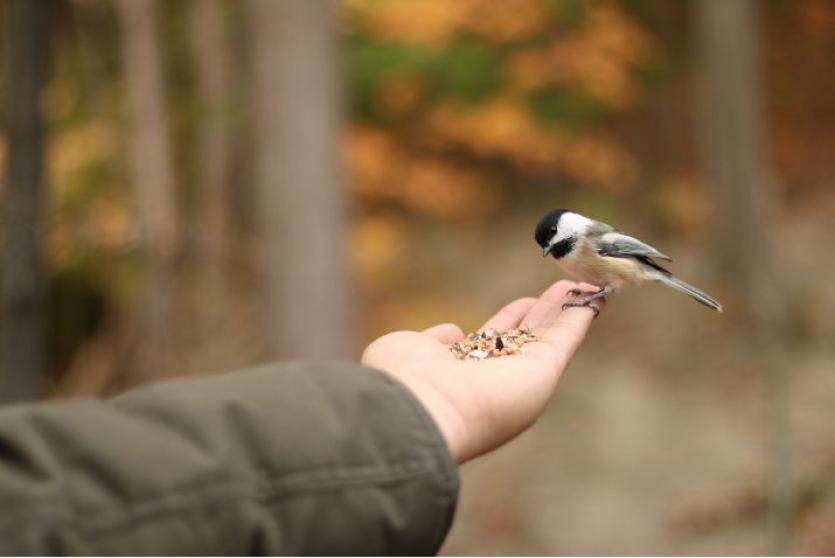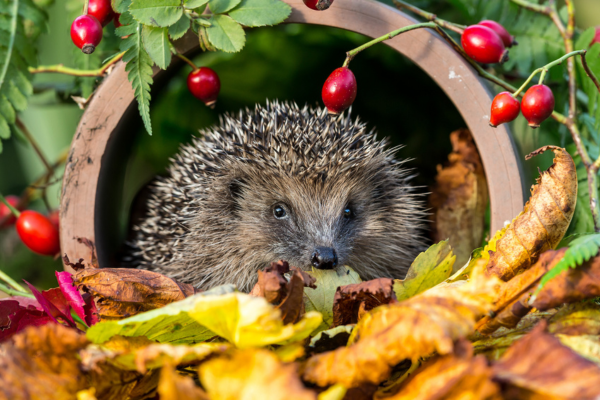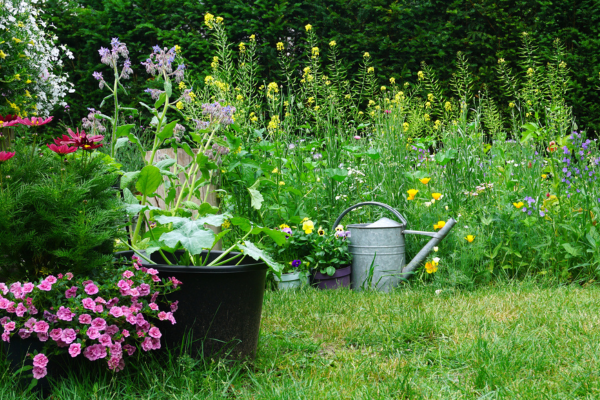- Home
- Advice & Guides
- How to do more for wildlife at home
How to do more for wildlife at home

Shared by Jen Turner, Development Manager at the Royal Forestry Society, a charity supported by us in partnership with GreenTheUK.
It’s the little things that make the difference at home, regardless of whether your space is large or small.
Despite wanting to fill my home with friends and family, our homes are not public spaces. In fact they are quite the opposite. Our homes are our sanctuaries. They are our safe spaces, where we can cast off the stresses and strains of the outside world, let our hair down and really be ourselves. We fill our homes with the things we need, the things we enjoy and the things that ultimately make us feel like we belong. Art, food, friends, family, memories. Our homes help us not just to survive everyday life, but to thrive.
Every window in every home offers the occupants an exclusive snapshot to the outside world. Blink and you’ll miss it! Only the privileged few who live in that home get to see the ever-changing vistas as the colours and moods change throughout the year. Although I find comfort in the familiar views, the ones that bring me the most joy are almost always unexpected encounters with wildlife. I have found myself, over the years, finding new ways to increase my chances of these encounters by attracting wild visitors to my garden and the spaces outside my windows.
Feed the birds
Bird feeders are an obvious place to start. They are easy to put up almost anywhere and once the birds in your area find them, you will be treated to a constant stream of charming bird visitors throughout the year. Don’t have a garden? Not a problem. I remember complaining to a friend that we had nowhere to put a bird feeder when we lived in a third floor flat in the middle of town. He bought me a bird feeder that sticks to the outside of the window (on little suckers). In no time at all I had a whole host of birds (mostly chirpy, iridescent starlings) who would come to check out what tasty morsels I had put out for them. If you have a garden, you can add bird feeders, bird baths and bird boxes to your heart’s content. If you don’t, there are plenty of smaller feeders, specially designed to stick to the outside of your window.

Hedgehog highways
I’m lucky enough to have a garden now and one of my favourite visitors are hedgehogs. Many a summer evening spent with friends in our garden has been greatly enhanced by hedgehogs tramping across the lawn in their noisy search for tasty slugs, bugs and other critters to eat (sometimes followed by a troop of smaller baby hoglets). Hedgehogs often travel between 1 and 2 miles in search of food. Safe routes through gardens (away from busy roads) can really help local hedgehog populations. You can create ‘hedgehog highways’ in your own garden or communal outdoor areas by making sure there are gaps (big enough to pop your hand through) under fences. Encourage your neighbours to do the same but make sure you have the permission of whoever owns the fence before you start making any holes.

Make space for wildlife
Lots of people tell me that they don’t want to do anything for wildlife at home because it looks messy. But a space designed for wildlife doesn’t have to be messy. In fact, well-tended gardens and window boxes, that are cared for with wildlife in mind are much more biodiverse than those that are not cared for (which will quickly die or become overgrown with just a few dominant plant species).
I like to mow the lawn once a week in the summer, so there’s space for kids and dogs to play but I leave a strip of lawn unmown to encourage wildflowers. I collect up fallen leaves from around my prize plants and trees to help stop the risk of infection but I pop those leaves in an unseen, quiet corner of the garden. There are some old bricks under this pile of leaves that have been arranged into a hedgehog size den (a perfect little nest to bring up those baby hoglets). Slugs and greenfly are removed to stop them eating my fruit and veg before humans can get a chance to. But (and this is important) I never use herbicides or pesticides. I’ve got a mix of native and non-native, bee, butterfly and bird friendly flowers, shrubs and trees in my flowerbeds (where kids and dogs don’t play). But I haven’t removed the daisies, dandelions and yellow pimpernel from the lawn. And all these small actions (and inactions) add up to garden that is literally buzzing with wildlife.
If you have a garden, you can encourage wildlife with a leaf pile or compost heap and plenty of wildlife friendly plants, shrubs and trees. Fruit trees, such as apples, pears, cherries and plums, have attractive blossom which is good for insects in the spring and tasty fruit in the summer and autumn (perfect for humans, birds, hedgehogs and badgers). If you don’t have a garden, try a pot or window box with some wildlife friendly flowers or invest in a small ‘bug hotel’ (an insect paradise made of natural materials with lots of cosy holes and crevices to hide in) that can be hung outside a window. These bugs will encourage other wildlife, such as birds and even bats.
Take action
Think about the views from your windows at home. Could they be augmented with simple actions to encourage wildlife into that picture? Would an evening in the garden be better if you were joined by hedgehogs as well as loved ones? Would the washing up be less dull if the backdrop included beautiful flowers, busy bumblebees or chirping birds? Well then, what are you waiting for?!
FIND OUT IF SHARED OWNERSHIP IS RIGHT FOR YOU
Shared ownership could open the door to your dream home. But is it the right move for you?
We can help you decide.




